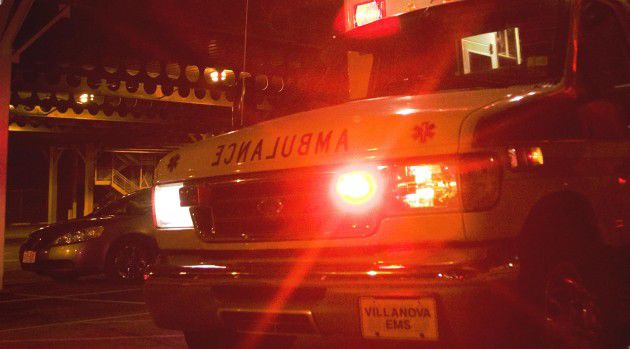Mock accident to create controlled chaos
March 14, 2012
The University’s Public Safety department will execute a very important drill on March 24 from 10 a.m.-1 p.m. John Shuter, Emergency Services manager of the University, explained that this drill will stimulate a serious, mass casualty incident. The University will work with five local agencies in order to ensure that students, faculty and parents would receive efficient and effective emergency services on campus. The University will work with Radnor Police Department, Lower Merion Police Department, Bryn Mawr Fire Department and Radnor Fire Department, as well as area hospitals. “We don’t get a chance to all work together very often,” Shuter said. Because so much help is needed in an emergency situation such as the one being simulated by the drill, the University wants to be sure that all agencies will work together smoothly so that the accident is taken care of in a timely manner. “We hope this drill will prepare all agencies in case of a large scale critical incident,” Shuter said. Students, faculty, parents, responding agencies, local hospitals and the University all benefit from this drill. As noted, the drill is meant to stage a disaster that involves mass casualties and various types of injuries. The pretend-disaster will be a structural issue in the Pavilion during a packed basketball game. The drill itself will take place in and around the Pavilion. At 9 a.m. on Sat. March 24, students who volunteer to play victims during the staged incident will report to the Pavilion and their assigned locations to help enact the incident. Students who volunteer to play victims will be given a lanyard that will have a sign dangling from it, displaying a list of symptoms for the medics to evaluate and then they will send that person where they need to go in order to be treated properly, whether that is in the University Health Center or an area hospital. The University’s Public Safety department is not the only University department taking part in executing this mock accident drill. Many of the University’s departments have assisted with soliciting volunteers, assisting with preparations and assisting on the day of the drill. The nursing students will be available for help to determine proper care for those injured. This nursing students’ assistance is not only a great benefit to those putting together the drill, but their assistance is also benefitting them greatly. Nursing students will gain experience of triage and those who would like to someday work as a trauma nurse will get a firsthand experience. The nursing students were extremely enthusiastic about participation in this activity. “Ninety-two nursing students volunteered upon hearing about it,” Shuter said. From this drill, the University hopes to gain a better insight on what is needed to be prepared for a large-scale incident such as structural damage to the Pavilion or something of the same magnitude. “We hope to provide better services for the students and community,” Shuter said. “It also helps us to review our plans to see what works and what doesn’t.” This drill has been in the works for just about a year with the help of David Tedjeske, director of Public Safety and Shuter himself, along with the rest of the Public Safety Department. Apparently, drills such as this are a common procedure at most large universities. “University of Delaware actually just did it,” Shuter said. The University is also utilizing an outside consulting firm to assist them with direction and evaluation of the drill. “We hope they will see things we don’t see so that they can be tweaked and improved,” Shuter said. “Sometimes, however, the self-evaluation we do is harder on us than the outside firms.” Local hospitals such as Bryn Mawr, Lankenau, Paoli and Riddle will be working closely with the University. To make the drill even more realistic, injured students will be transported to these local hospitals by either ambulance or van. Each hospital is hoping for at least 25 students. “The goal of this is to test their abilities,” Shuter said. “We want to send them too many students and see how they handle it.” This will help the hospitals better accommodate patients in case such a large-scale accident does occur. “I think that this will have a very positive effect,” Shuter said. “We will be building better relationships with our surrounding agencies.” This is not the only way the University prepares for emergencies. Public Safety holds various “tabletop exercises” usually about twice a year along with the University’s Emergency Management Group. Information about the drill can be found on the Public Safety webpage, as well as through the University’s newswire email system. Students who wish to volunteer are able to sign up on the website until March 23, the day before the drill. Shuter urges students to sign up early, though, because spots are limited. It is important for students to know what to expect coming into this drill. “There will be what seems like chaos throughout the event,” Shuter said. “Students should prepare themselves for the type of seriousness there will be. Some may get overwhelmed by it all.”











